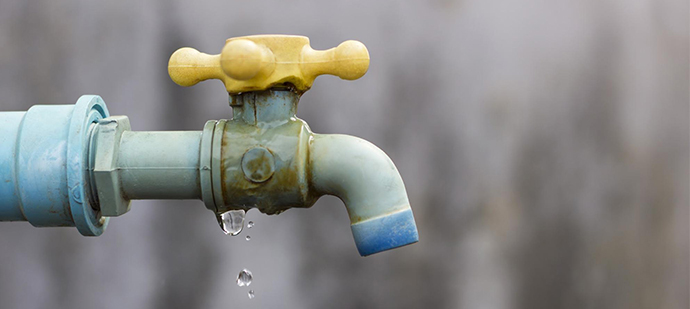How to Inspect If Your Home Has a Concealed Leakage
How to Inspect If Your Home Has a Concealed Leakage
Blog Article
This great article which follows in relation to Detecting hidden plumbing leaks is really engaging. Read it for your own benefit and figure out what you think about it.

Early detection of leaking water lines can minimize a possible calamity. Besides saving you money, it will certainly minimize the stress as well as stress. The minute you locate a leak, calling your plumber for fixings is the very best solution. However, some small water leakages may not show up. Below are some hacks that aid if you can not find it with your naked eyes.
1. Take A Look At the Water Meter
Examining it is a surefire way that aids you uncover leaks. If it relocates, that indicates a fast-moving leak. This indicates you may have a slow leakage that could even be underground.
2. Examine Water Consumption
Evaluate your water expenses as well as track your water consumption. As the one paying it, you ought to see if there are any type of disparities. If you identify sudden changes, despite your intake coinciding, it implies that you have leakages in your plumbing system. Remember, your water costs should fall under the same variety monthly. An abrupt spike in your bill suggests a fast-moving leak.
Meanwhile, a steady rise on a monthly basis, even with the same habits, reveals you have a slow leak that's also gradually intensifying. Call a plumber to completely examine your residential property, particularly if you really feel a warm area on your flooring with piping beneath.
3. Do a Food Coloring Examination
30% comes from bathrooms when it comes to water consumption. Examination to see if they are running effectively. Drop flecks of food shade in the tank and wait 10 mins. If the color in some way infiltrates your bowl during that time without flushing, there's a leakage in between the tank as well as bowl.
4. Asses Outside Lines
Do not fail to remember to check your outside water lines as well. Needs to water leak out of the connection, you have a loose rubber gasket. One little leak can squander loads of water as well as surge your water expense.
5. Analyze the scenario and examine
Property owners ought to make it a routine to examine under the sink counters as well as even inside cabinets for any kind of bad odor or mold and mildew growth. These two warnings indicate a leak so punctual focus is required. Doing routine evaluations, even bi-annually, can conserve you from a significant issue.
Inspect for discolorations and also damaging as a lot of appliances as well as pipes have a life expectancy. If you believe dripping water lines in your plumbing system, do not wait for it to rise.
Early detection of dripping water lines can reduce a prospective calamity. Some little water leakages might not be noticeable. Checking it is a surefire way that assists you discover leakages. One little leakage can throw away lots of water and also surge your water costs.
If you presume leaking water lines in your plumbing system, don't wait for it to rise.
WARNING SIGNS OF WATER LEAKAGE BEHIND THE WALL
PERSISTENT MUSTY ODORS
As water slowly drips from a leaky pipe inside the wall, flooring and sheetrock stay damp and develop an odor similar to wet cardboard. It generates a musty smell that can help you find hidden leaks.
MOLD IN UNUSUAL AREAS
Mold usually grows in wet areas like kitchens, baths and laundry rooms. If you spot the stuff on walls or baseboards in other rooms of the house, it’s a good indicator of undetected water leaks.
STAINS THAT GROW
When mold thrives around a leaky pipe, it sometimes takes hold on the inside surface of the affected wall. A growing stain on otherwise clean sheetrock is often your sign of a hidden plumbing problem.
PEELING OR BUBBLING WALLPAPER / PAINT
This clue is easy to miss in rooms that don’t get much use. When you see wallpaper separating along seams or paint bubbling or flaking off the wall, blame sheetrock that stays wet because of an undetected leak.
BUCKLED CEILINGS AND STAINED FLOORS
If ceilings or floors in bathrooms, kitchens or laundry areas develop structural problems, don’t rule out constant damp inside the walls. Wet sheetrock can affect adjacent framing, flooring and ceilings.
https://www.servicemasterbyzaba.com/blog/how-to-detect-water-leakage-in-walls/

We are very eager about Leaking water lines and I am praying you enjoyed my blog entry. Sharing is caring. Helping people is fun. I am grateful for your time. Visit us again soon.
Report this page